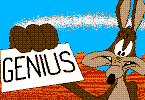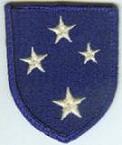mdiehl
Posts: 5998
Joined: 10/21/2000
Status: offline

|
quote:
Even with the turbo-charger the P-39 would have been a slow and not as maneuverable, but at least it would have made a much better interceptor than it was.
Well, it would not have been as maneuverable at low speed settings, but more maneuverable at high speed. More importantly, it WAS much faster than most Japanese planes, even without the 2-stage supercharger. The Japanese regarded the P-39 as an easy kill IF they could lure one to 20,000 feet. But Japanese pilots were notably reluctant to descend to the P-39's fighting altitude of <14K feet. Probably because the P-39 could make 375 mph roughly in the early, non 2-stage sc'd variants as compared with the A6M's 331 mph.
To get a good idea of what the P-39 *might have been* you need to consider it's close descendant the P-63. It was a complete redesign of the P-39 with the supercharger and a laminar wing. Despite being heavier, it's top speed was 410 mph and service ceiling was 43,000 feet.
Probably this means that the P-39J-Q with a supercharger would have been capable of a top speed around 380 mph with good performance to 35,000 feet. But we can never know.
Ironically, had the United States imagined that it could be bombed, it is likely that the production P-39s would have retained their superchargers, since the a.c. was intended, when originally designed, as an anti-bomber interceptor (hence the 37mm cannon).
< Message edited by mdiehl -- 7/11/2007 12:18:25 AM >
_____________________________
Show me a fellow who rejects statistical analysis a priori and I'll show you a fellow who has no knowledge of statistics.
Didn't we have this conversation already?
|
 Printable Version
Printable Version





















 New Messages
New Messages No New Messages
No New Messages Hot Topic w/ New Messages
Hot Topic w/ New Messages Hot Topic w/o New Messages
Hot Topic w/o New Messages Locked w/ New Messages
Locked w/ New Messages Locked w/o New Messages
Locked w/o New Messages Post New Thread
Post New Thread